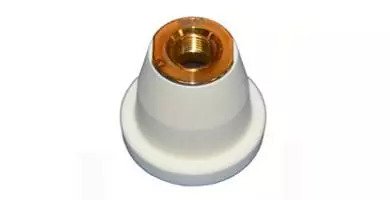Laser cutting is a #1 choice in the manufacturing industry, leather industry, electronic sector, medical sector, etc. as it offers both a cost-effective and high accuracy cutting solution. Laser cutting is a method of piercing material with a laser beam to melt the material for a clean finish. This technology allows you to carry out customized work, and higher volume jobs. And with laser machines that use Amada parts and Trumpf parts, you can maximize your productivity and cater to the needs of the customers in the best possible way.

Laser cutting is effective for your business but there are times you might feel that it is not cost-efficient. However, this is not the case. You can significantly reduce the laser cutting costs in some simple ways. Discover the ways to reduce laser cutting costs.
- Create a Prototype
Your finances can go for a toss if you directly start the process of laser cutting for the entire product and do not get the desired results. Because if you dislike the end-product, you will have to make another one and this means investing again.
Creating a prototype simply means creating a mock-up. For those who use laser cutting for the first time might have questions regarding the result they will get. Luckily, there is an easy and cost-effective method available to evaluate the product- creating a prototype. It is possible to digitally make a prototype of your design. You can do this by printing the design considering every aspect like space, and shape onto a paper. This is a cost-effective way to give you a clear idea about how your end-product might look. It will save you from spending extra if the outcome fails.
- Grouping and Nesting
Eliminating space in the design helps to reduce cost. There are two ways to do this:
Grouping- is a laser-cutting technique that helps to reduce waste. It is a good way to increase efficiency and reduce cost. This method allows you to put the pieces into clusters which increases the efficiency of the laser work. Moreover, it also reduces the laser head must travel to make the next cut thus giving circular cuts. Now, rounded lines are necessary but expensive. There this method by accommodating circular cuts will save you money.
Nesting- just like grouping; nesting is a method to reduce waste. This technique by rearranging the pieces you want to cut gives them a common edge which in turn creates less space. By placing complementary lines together, the edge becomes one. So, if the design includes common straight lines, you will have to cut the line only once. This reduces the amount spent on cutting.
- Keep a Check on Maintenance
Some people mistake maintenance for repair. Repair means to fix a machine while maintenance is all about checking if the machine is running smoothly. Proper maintenance is necessary to reduce the overall expenses. But it involves some investment and therefore some operators skip maintenance at certain intervals if their machine shows no sign of damage and works as usual. This is a risky decision. Suppose your machine stops working suddenly due to lack of proper maintenance and you have to let go of a good offer on hand because it will take 5 more days to repair the machine.
To avoid this, closely follow the maintenance guide. Secondly, invest in quality spare parts for better functioning of your machine. For instance, laser machines using Amada parts and Trumpf parts are reliable and of high-quality.
Summing Up
This goes out to show that reducing the extra expense on a laser machine is not as difficult as it seems. Moreover, the choice of materials and spare parts can also decrease the price of laser technology. If you use spare parts from popular brands like Amada parts and Trumpf parts, you will be able to enjoy the extra cash that remains in your pocket.
Source: https://altpartsinc.wixsite.com/altpartsinc/single-post/how-to-reduce-laser-cutting-costs





